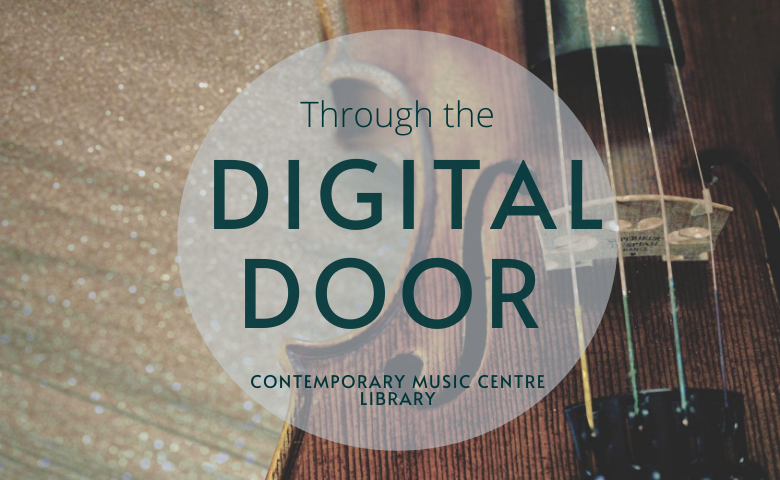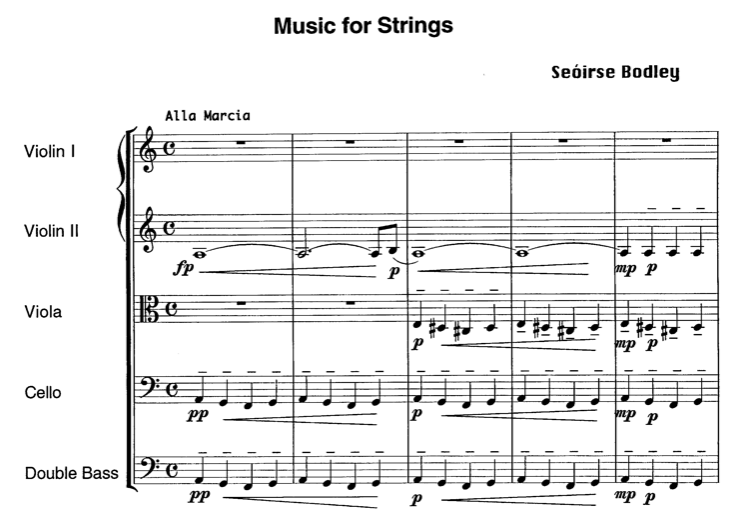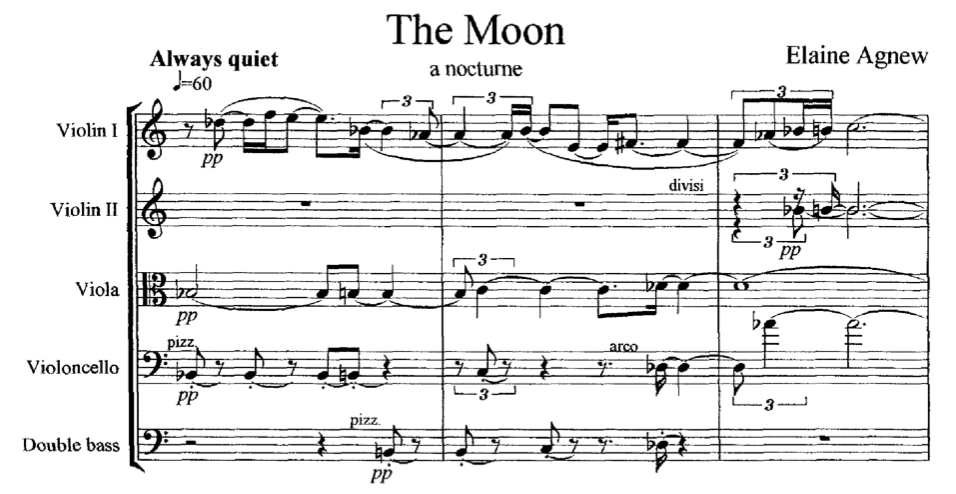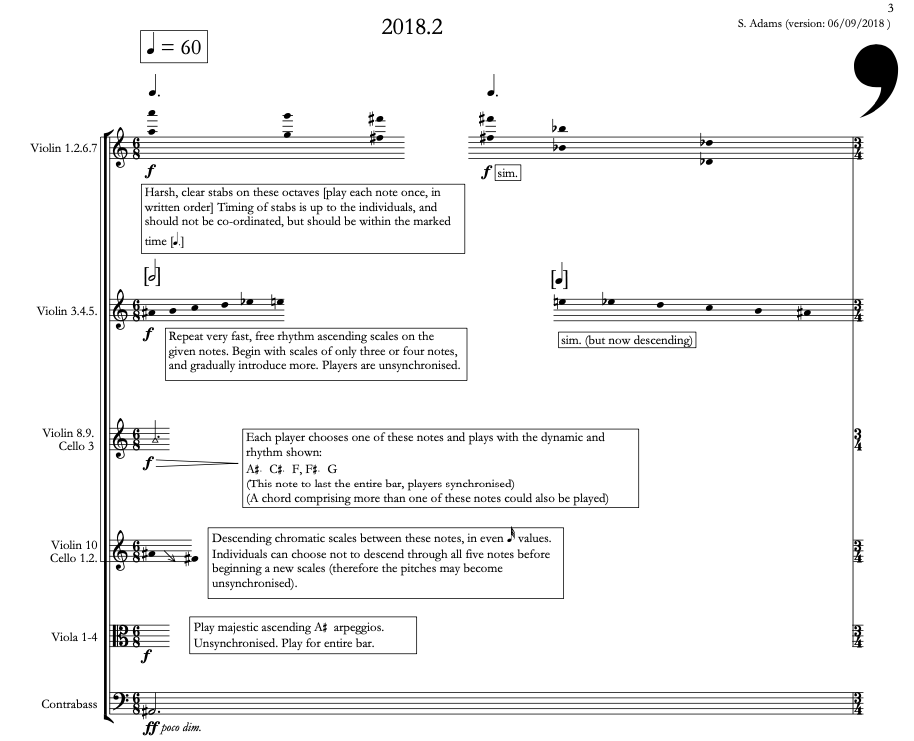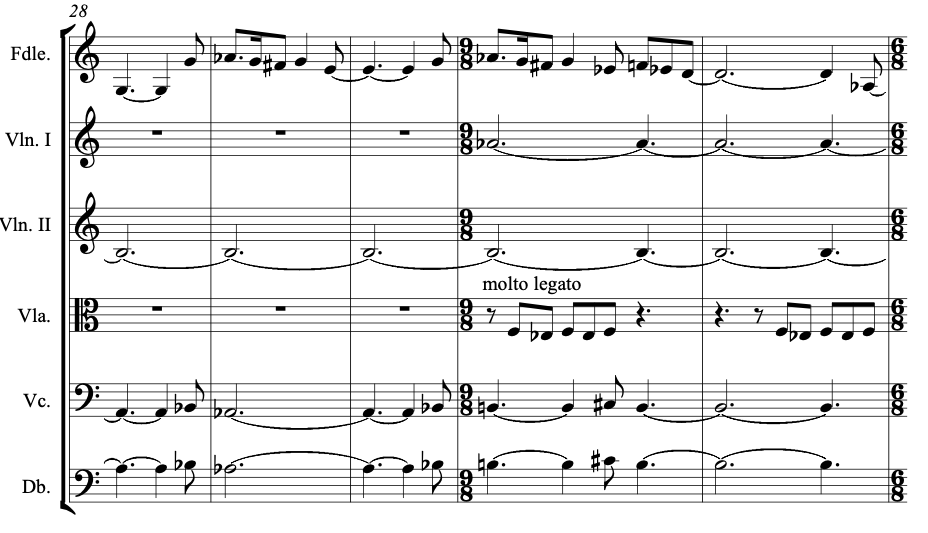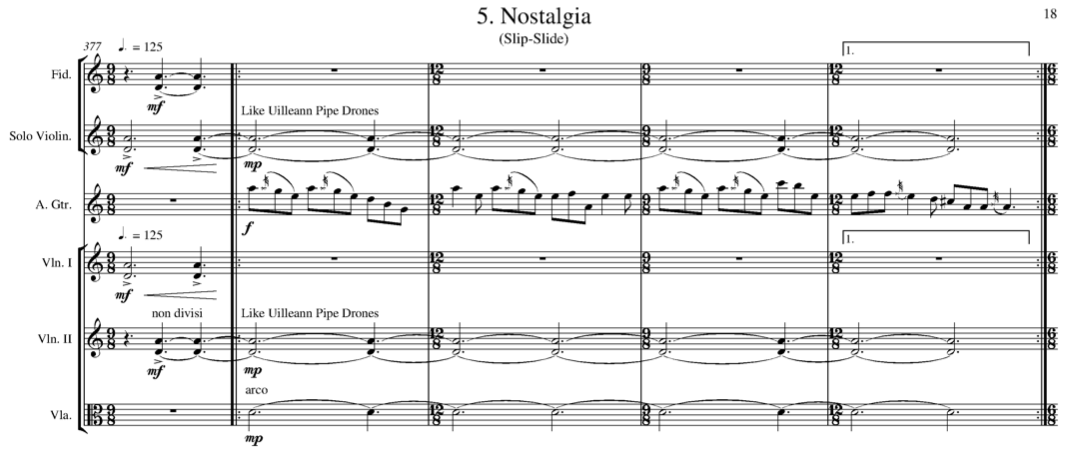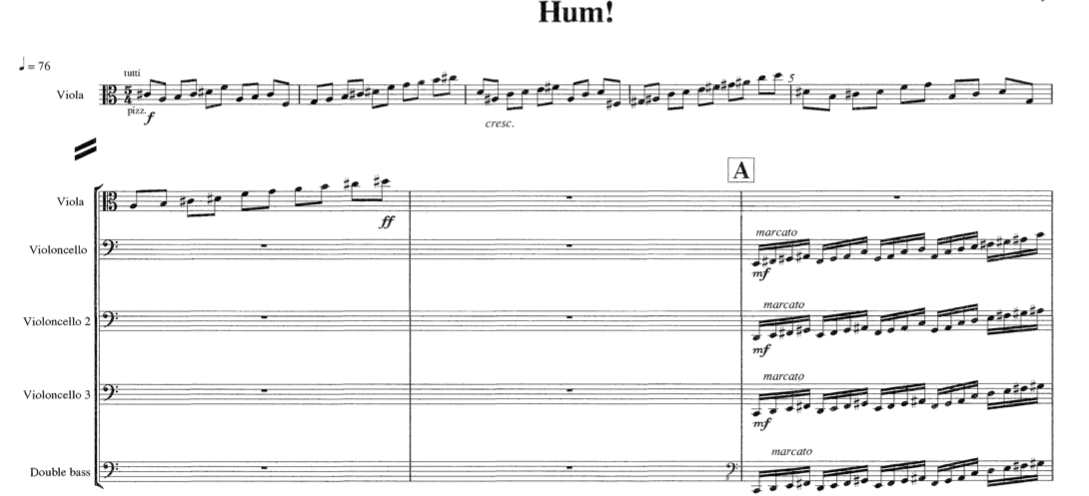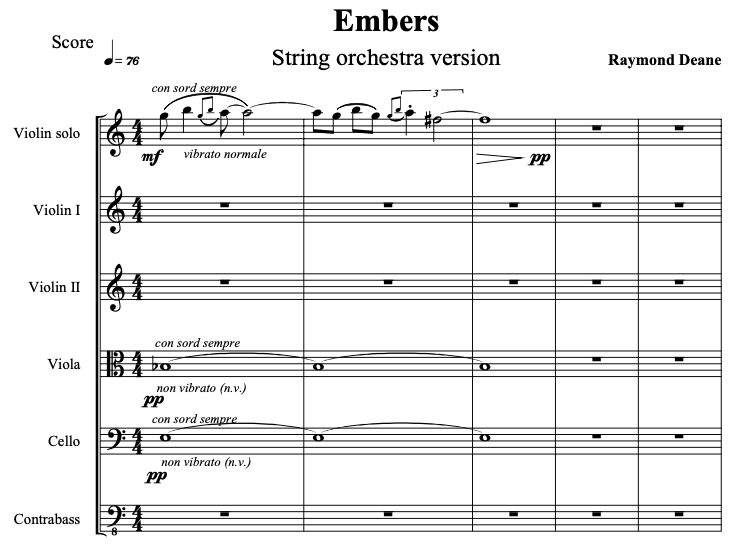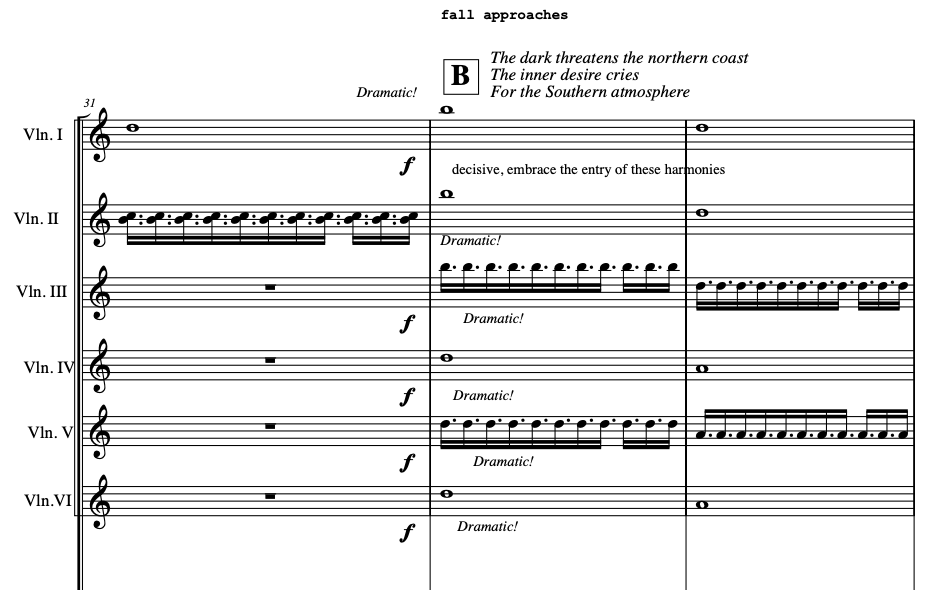Through the Digital Door: works for String Orchestra in CMC's Library (Part One)
As smaller-scale performances begin to be planned again across the world, CMC Librarian Susan Brodigan looks into CMC's vast collection to highlight works for string orchestra. CMC's library holds a large number of works for string orchestra, with over two hundred works in our collection. Many of these works also include solo instruments and solo voice elements. This week's Through the Digital Door is the first of two features highlighting works for string orchestra.
Seoirse Bodley Music for Strings (1952) 17'
This work was premiered by Dublin Orchestral Players, conducted by Brian Boydell in December 1952 at the Metropolitan Hall in Dublin. Comprising of four movements, this work was composed when the composer was nineteen years of age, and is regarded as his first significant work. The composer Frederick May described this piece:
The harmonies, while frequently bold and daring, are never perverse and the texture is always clear with a strong feeling for counterpoint.
Mícheál Ó Súilleabháin Oileán/Island (1988) 19'
This work was premiered by the Irish Chamber Orchestra in June 1989, conducted by the composer. This work is based on an earlier work titled Concerto for Traditional Musician and String Orchestra, written in 1979 and commissioned by the Gorey Arts Festival.
Joan Trimble Suite for Strings (1951) 12'
This work was first performed by Radio Éireann Symphony Orchestra, conducted by Arthur Duff in April 1953 in the Phoenix Hall in Dublin. The work is in three movements as outlined in the programme note:
...a march-like Prelude, a slow Air and a rhythmic Finale. A graceful Intermezzo that originally formed the second movement was subsequently withdrawn from the suite as a separate piece in its own right.
Elaine Agnew The Moon (A Nocturne) from The Song of Wandering Aengus (2002) 3'
This work was commissioned by the Irish Chamber Orchestra as part of a larger work The Song of Wandering Aengus, a collaborative work based on the poem by W. B. Yeats with movements by Fergus Johnston, Ian Wilson, Raymond Deane, Jennifer Walshe and Elaine Agnew for the 2002 Killaloe Music Festival.
The Moon was commissioned as the fourth movement and is a quiet nocturnal evocation of the inner thoughts of wandering Aengus. His sense of loneliness and grief is captured in this brief impression for string orchestra which features long fading tremolos, haunting unison lines and delicate chordal passages.
Sebastian Adams 2018.2 (2018) 18'
This work was commissioned and premiered by the Irish Chamber Orchestra.
Notating the piece partly like this allowed me to give the individual performers a lot of agency and decision-making power. At times, there will be a kind of controlled chaos that reminds me of the natural world: each player interprets the same instruction differently and is kept on the same path by external conditions (the influence of the conductor). The piece is in three movements: the outer pair mirror one another and generate internal tension by alternating material in sections expanding and contracting in time based on the Fibonacci series (a self-conscious nod back at nature).
Nick Roth Woodland Heights (2014) 13'
This work was completed during the composer's residency at the Centre Culturel Irlandais, Paris in 2014, and is a study of forest canopy ecology.
The form of the piece maps the growth of a model forest stand over a projected 720-year period, where a crotchet in the score is equal to a year in ecological time. The imagined forest is composed of seven tree species common to the garden of my original family home in Chorleywood, from which the piece also takes its title. Writing this piece necessitated an exploration of the fascinating terrain that is contemporary ecology and provided a reassurance that humanity’s deep love of the biosphere still finds expression in our societal priorities.
Rachel Holstead Ardee Dances (2005) 17' for fiddle, baroque violin and string orchestra
This work was commissioned by Louth County Council under the Dept. of Environment, Heritage and Local Government's Per Cent for Art scheme in 2005, and was premiered by Irish Baroque Orchestra with Gerry O'Connor (fiddle) and Elizabeth Wallfisch (violin) in the Church of St. Mary in Ardee.
The five movements of Ardee Dances follow the flow of the Ardee landscape through the never-ending cycle of ice-age, thaw and re-growth. Drawing on the languages of two contrasting styles of fiddling, each with its own sense of time and place, the music moves from moments of stillness to wild dances. Its flow, like that of the landscape, is part of a larger dance which continues, unheard, long after the last note has sounded.
Michael Holohan The Road to Lough Swilly (2001) 27' for uilleann pipes and string orchestra
This work was premiered by RIAM Chamber Orchestra directed by Liz Csibi in Tullyallen, Co. Louth, and was commissioned by Na Piobairí Uilleann. The work was first written for solo uilleann pipes in 2001, and later revised to this version for uilleann pipes and string orchestra.
The Road to Lough Swilly is essentially a musical portrait of the great Hugh O’Neill (1550 – 1616) whose life is commemorated at this time, 24th December 2001 being the 400th Anniversary of the Battle of Kinsale. In order to create this portrait, Holohan makes use of traditional Irish music forms – reels, jigs, hornpipes and airs alongside descriptive pieces and English court dances.
Dave Flynn Music for the Departed (2006 rev. 2010) 22' for fiddle, violin, acoustic guitar and string orchestra
This work was originally written in 2006 for a trio of fiddle, violin and guitar, commissioned by West Cork Music for the Masters of Tradition Festival. This arrangement was commissioned by the RTÉ Concert Orchestra and the Irish Chamber Orchestra. It was premiered by Martin Hayes (fiddle), Brona Cahill (violin), Dennis Cahill (guitar), and the RTÉ Concert Orchestra, conducted by David Brophy in November 2011 in the National Concert Hall, Dublin. The composer's programme note describes the work:
The piece is a description in music of the grieving process, dedicated to the memories of my mother Joan Jennings and my aunt Catherine Flynn, both of whom died long before their time. There are seven connected movements, each one based on a new tune, and echoing the seven stages of the grieving process - grief, shock, anger, tears, nostalgia, determination and celebration. Just like the grieving process, this piece involves a long difficult journey, yet it ends in joyous celebration of the lives of the deceased.
Siobhán Cleary Hum! (1998) 15' for string orchestra and two actors
This work was commissioned by the Irish Chamber Orchestra and premiered in Inisbofin in 1998. It is a musical theatre piece for two actors and string orchestra and is a collaboration with the writer Gerard Beirne.
More recently, this work was performed as part of New Music Dublin 2020 by the RTÉ National Symphony Orchestra, conducted by Ryan McAdams.
The dialogue is limited to only two syllables; the first of these is spoken by the first voice who sits alone and is echoed by a hidden figure. This brings comfort and companionship at first until the “echo” begins to test his partner, initially in a playful manner. As the echo gradually becomes an independent voice, the confrontation veers from humour to rage. At the highest point of tension, the relationship between the two men breaks down as the drama shifts to hopelessness and then inevitably it seems, to tragedy. The string orchestra, acts like a Greek chorus, commenting on the dialogue, but not accompanying it. The music alternates between stormy polyrhythmic scalic passages and a sharp-edged pointillistic section finally ending with a contrapuntal elegy, reflecting the two men’s lonely anguish.
Raymond Deane Embers (1973/1978 rev. 2015) 8'
This work was first composed for string quartet or a quartet of viols in 1973, and later arranged for string orchestra. This string orchestra version was premiered by the RTÉ Symphony Orchestra, conducted by Albert Rosen in the National Concert Hall in 1983. It was performed as part of RTÉ's Composing the Island 2016 project, reflecting on a century of music in Ireland from 1916-2016.
The word 'embers' has two etymologically unrelated meanings; the smouldering remains of a fire, and a recurring circuit (cf. 'ember-days'). The former might be taken to refer to the work's fragmentary harmonic and melodic materials; the latter to its overall shape. This is minimalism with a small 'm', and far removed from 'holiness'.
Linda Buckley Fall Approaches (2012) 11'
This work was first written in 2007 for choir and optional electronics, premiered by New Dublin Voices. It was then arranged in 2012 and premiered by Irish Chamber Orchestra and is inspired by Icelandic poetry, in particular, the practice of 'rimur' chanting.
The text set in the choral form is from Haustid Nalgast, an example of Rimur, written by Stefan Hvitadel (1887-1933). Rima (plural rimer) is a traditional form of narrative Icelandic epic song chanted or intoned in a specific manner called "ad kveda". The early rimur are primarily based on pre-existing narratives in prose, heroic tales and mythical or purely fictitious sagas. The Icelanders enjoyed a special form of communal storytelling and poetry recitals from the earliest times, and these seem to have developed into the "kvoldvaka" (night-vigil) of which the chanting of rimur was an integral part.

